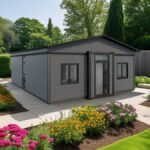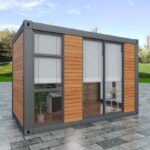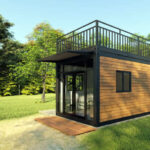CALL US:
+44 (0) 28 9099 4407
Modular vs. Traditional Construction: What’s Best for You?
When it comes to building or renovating a space, one of the most important decisions you’ll make is how to approach the construction process. In recent years, modular construction has gained traction as a viable alternative to traditional building methods. But which one is the right choice for your project? In this post, we’ll break down the differences between modular and traditional construction and help you determine which option works best for you.
What is Modular Construction?
Modular construction involves creating pre-fabricated sections (or modules) of a building in a controlled factory environment. These modules are then transported to the construction site, where they are assembled into the final structure. This process is efficient, as many modules can be built simultaneously, reducing the overall timeline.
What is Traditional Construction?
Traditional construction, on the other hand, refers to the conventional method of building where every aspect of the structure is constructed on-site. This process typically involves workers assembling the foundation, framing, roofing, plumbing, electrical systems, and finishes directly at the job site.
Key Differences Between Modular and Traditional Construction
-
Construction Time
One of the biggest advantages of modular construction is the significantly reduced build time. Because modular units are fabricated off-site, construction can continue on the foundation while the modules are being built. This simultaneous process can save months of labor and scheduling delays. In contrast, traditional construction relies on sequential processes, which often leads to longer timelines due to weather delays, material shortages, and other unforeseen issues.
-
Cost Efficiency
Modular construction can often be more cost-effective due to the streamlined process and reduced labor costs. Since the modules are built in a controlled factory environment, materials are more efficiently used, and waste is minimized. Furthermore, shorter build times mean that labor costs are lower.
Traditional construction tends to be more expensive because it is more labor-intensive and may require more on-site work. The extended timeline also adds costs, particularly in terms of labor and potential delays.
-
Customization and Design Flexibility
Traditional construction generally offers more flexibility in terms of custom designs. If you have a unique vision for your space, traditional methods provide greater freedom to make alterations during the build process.
Modular construction, while flexible, does have some limitations when it comes to design. Since the modules are pre-built in a factory, the scope for customization is somewhat constrained. However, many modular construction companies offer a variety of designs and configurations that allow for a certain level of personalization.
-
Quality Control
One of the key benefits of modular construction is the quality control that comes with building in a factory. Because the modules are constructed in a controlled environment, the materials are not exposed to weather conditions that can impact their integrity. Additionally, the process is often subject to rigorous quality standards, resulting in a more reliable finished product.
Traditional construction relies on site conditions, and the quality can be influenced by factors such as weather, worker skill, and material handling. This can sometimes lead to variations in the final product.
-
Environmental Impact
Both modular and traditional construction methods can be sustainable, but modular construction tends to be more environmentally friendly. Since the materials are pre-fabricated in a factory, there is less waste generated during construction. The controlled environment also means that the materials are more carefully handled, reducing the risk of damage and waste.
Traditional construction can generate more waste, as materials are often cut and assembled on-site. The extended timeline also means that construction materials may sit exposed to the elements for longer, leading to potential degradation.
When to Choose Modular Construction
Modular construction is an excellent option if you’re looking for a faster, more cost-effective way to build a standard design with minimal customization. It’s particularly well-suited for projects like office buildings, schools, hospitals, and even residential homes. Additionally, modular construction is a great choice for businesses or individuals looking to minimize the impact of construction on the environment.
When to Choose Traditional Construction
Traditional construction is ideal for projects that require a high degree of customization, unique designs, or complex structures. If you have specific architectural needs, intricate layouts, or a desire for a more personalized space, traditional construction may be the best choice. It’s also the go-to method for larger-scale projects or buildings with specific regulatory requirements.
Conclusion
The decision between modular and traditional construction depends on your project’s needs, timeline, budget, and design preferences. If speed, cost-efficiency, and sustainability are top priorities, modular construction could be the best fit for you. However, if you’re looking for more flexibility in design or a highly customized structure, traditional construction may be the better choice.
By understanding the pros and cons of each method, you can make an informed decision that will help bring your vision to life while optimizing your resources.



